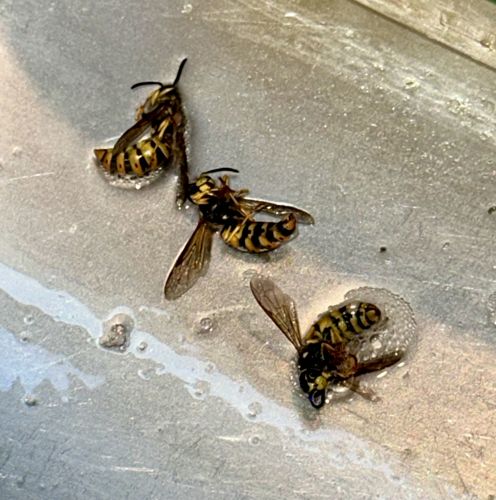Yellow Jacket
Scientific Name: Vespula spp. or Dolichovespula spp.
Order & Family: Hymenoptera, Vespidae
Size: Typically 10-16 mm (0.4-0.6 inches) in length, queens can be slightly larger.

Natural Habitat
Yellow jackets build nests in a variety of locations depending on the species, which can include underground in abandoned rodent burrows, in hollow logs, in attics, in wall voids, or hanging from trees and shrubs. They are commonly found in urban, suburban, and rural environments, especially near human activity where food sources are abundant.
Diet & Feeding
Yellow jackets are opportunistic omnivores. Adults feed on nectar, fruit, and other sugary substances. They also prey on various insects and arthropods (like flies, caterpillars, and spiders) to feed their larvae. As scavengers, they are attracted to human foods such as meats, sweets, and sodas, especially in late summer and fall.
Behavior Patterns
Yellow jackets are social insects living in colonies that can number in the thousands. They are known for their aggressive foraging behavior and their territorial defense of nests, especially when disturbed. Unlike bees, they can sting multiple times. Their activity peaks in late summer and early fall as the colony size reaches its maximum and food sources become scarcer.
Risks & Benefits
Risks: Yellow jackets can sting multiple times, and their stings are painful and can cause allergic reactions in sensitive individuals, ranging from mild local swelling to severe anaphylaxis. They are often considered pests due to their attraction to human food and aggressive defense of nests. Benefits: They act as natural pest control by preying on many garden and agricultural pests, such as caterpillars and flies. They also contribute to decomposition as scavengers.
Identified on: 10/14/2025